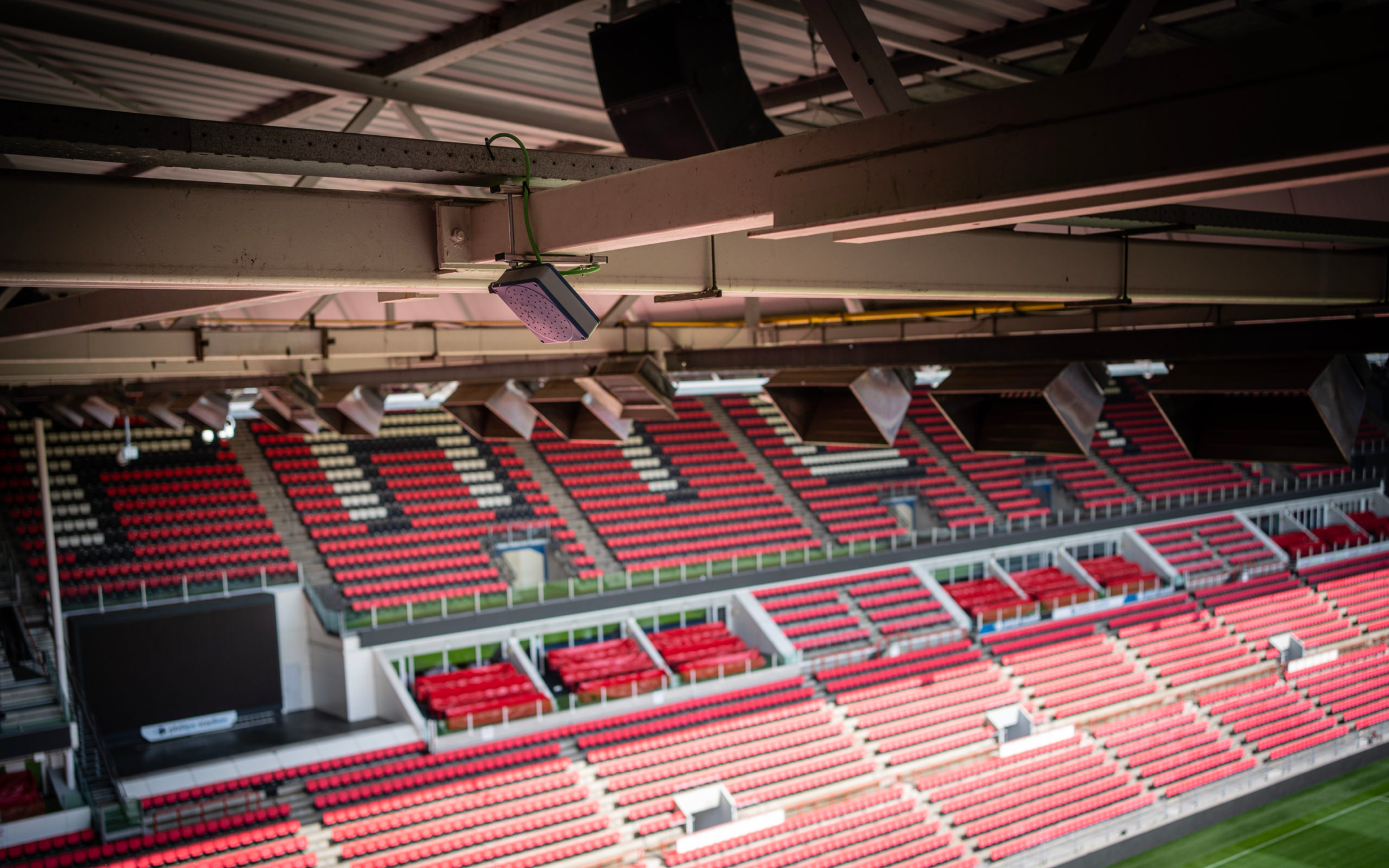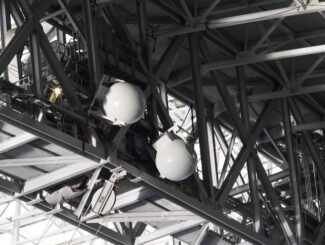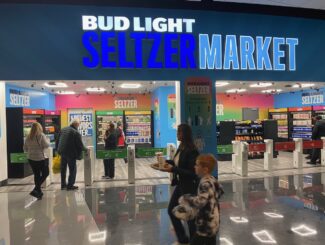
Rick Scholte is an audio alchemist, turning sound waves into images and heat maps with his company’s “acoustic cameras” that can zero in on a small group of fans or render an entire seating bowl in multi-colored decibel levels.
Scholte is also founder and CEO of Sorama, which builds and sells these acoustic cameras. While the units have obvious use in industrial environments and security applications, the buzz around Sorama in the last year derives from acoustic camera deployments in smart stadiums to increase fan engagement through innovative use of audio data.
Here’s how Sorama’s acoustic cameras work: A single unit consists of a visual camera and a dense array of omni-directional microphones, each recording sound waves from a targeted area. Advanced signal processing software on the edge of each device creates inverse beam patterns, then calculates the origin point for the sound waves. Directional sound levels are then plotted as a color map over a visual camera image using sound-level “pixels.” In some instances, the light camera image is replaced by a projected stadium floor plan to show where in the venue the loudest sounds are, Scholte said.

A typical installation of acoustic cameras in a stadium ranges from a couple units to two or three dozen. They’re typically installed overhead on gridwork, similar to other stadium tech like antennas or Wi-Fi access points. The acoustic cameras can hone in on an area as small as five seats wide and five rows deep, or entire sections of the stadium, depending on the requirement or occasion.
Sorama isn’t the only vendor in the emerging sector of acoustic cameras. Four German companies have competing technology, including GFAI Tech GmbH in Berlin; Polytec in Baden-Württemberg; HBM/Brüel & Kjær in Darmstadt; and CAE Systems and Software in Gütersloh.
The Petri dish of Eindhoven
Some of the emerging smart-stadium applications for acoustic cameras that Sorama has identified include detection of team songs, then flashing lyrics on scoreboards and big screens so newcomers can follow along. Highly granular audio from the loudest part of the stadium — say, the end of the stadium where a goal was scored — can be added to instant replay video to create more of that in-stadium feel and audio from right around where the goal was scored.
It’s no surprise that something innovative like an acoustic camera should emerge from the southern Netherlands. Lighting and electronics giant Philips NV once owned the local professional soccer team, Philips Sport Vereniging (PSV), and is the team’s most longstanding sponsor. The company also owns the 35,000-seat Philips Stadion where PSV plays, cementing the vendor’s outsized presence in Eindhoven, which also serves as Philips’ global headquarters.
“We were founded by Philips, so we have innovation in our DNA,” said Damian Bott, head of strategy for PSV. “We’re not the biggest or richest club, but we’re living in the Silicon Valley of Europe, and we try to connect with those companies here and see how we can collaborate. And sound is a new solution for fan engagement.”
It didn’t take long for Bott to see the potential of acoustic cameras as a way to involve fans in contests. “Make some noise!” contests are a fan favorite worldwide, but what if you could stir up competition between different parts of the stadium? Bott decided to find out.

“We did a sound map that was really well received by the fans… ‘Hey, Section G, you need to do a better job next time!’ And then we know we can go to a sponsor that will connect with that,” Bott said.
Sorama and PSV are working on another fan game in which higher sound levels turn on specialized lights around the stadium, and even change color as decibel levels increase. Fans love the competitive aspects of such contests, sponsors appreciate the novelty, and stadium owners welcome the revenue.
“The stadium experience is why fans go to games, so anything we can do to create a better atmosphere and have fans make more noise” adds to the experience, Bott said. “If we can do something really cool before the game and it gets fans in five minutes earlier, they’ll probably buy a beer or a Coke. Multiply that by 30,000 and there’s your business model right there.”
Audio can be monetized in other ways as well. Bott said fans love looking at the playback online and on social media to see replays of key match moments, or how well their section performed during halftime contests, all of which can be sold to sponsors. Sorama is also talking to ESPN Netherlands and PSV to use spatial sound, where directional microphones can be used to provide multiple audio streams.
Preparing for North American opportunities
And in a more recent development, Sorama recently opened up a North American office in Houston, according to Scholte. “We may be doing something in Dallas and Los Angeles – the 2028 Olympics and the 2026 World Cup are big opportunities for us,” he added.
Sorama USA has already won a supply contract with an American professional sports team to install its acoustic cameras at its stadium that’s expected to go live in 2024. Scholte wouldn’t divulge the stadium or team.
And away from the stadium and arena market, Sorama has also been working with another American client in a different industry sector: Law enforcement. Scholte explained acoustic cameras have been deployed for loud vehicle detection; once a vehicle’s sound has been measured, it matches the result back to the license plate.
Back home in Eindhoven, Sorama has been working with Signify, Philips’ recently renamed commercial lighting business unit. Scholte said his company has been testing colored LED lighting in the Sorama lab. “We can couple that with sound and allow the fans to control the light,” he explained, another fan contest and sponsor opportunity in the making.







